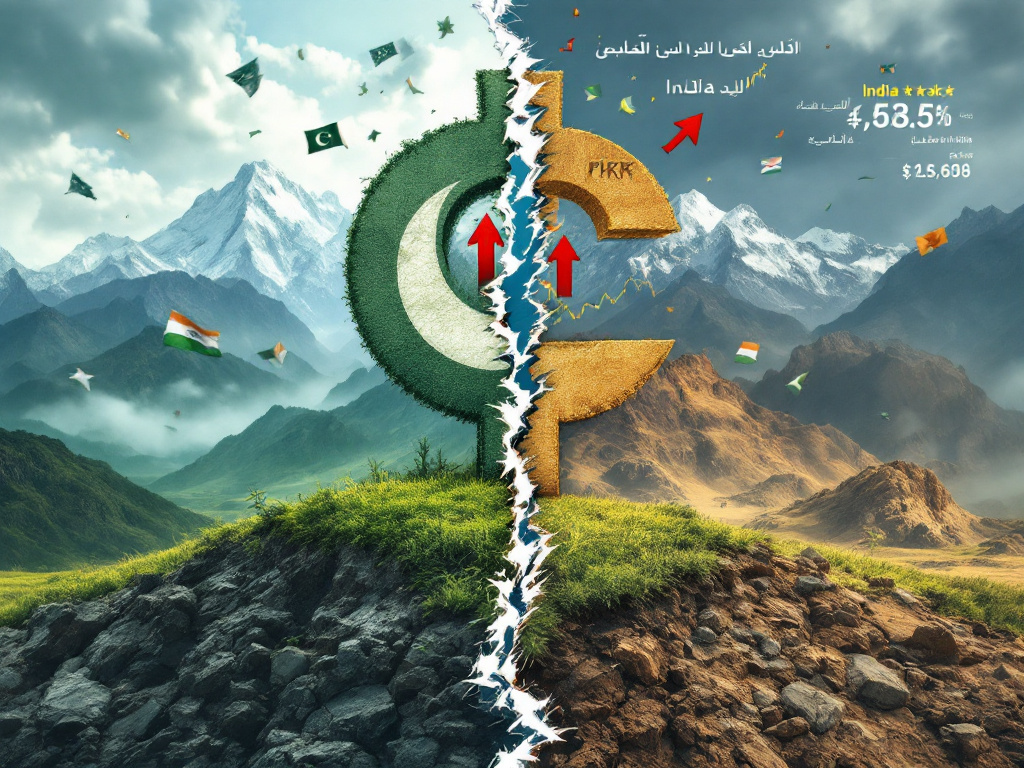Escalating India-Pakistan Tensions: A Looming Economic Crisis for Pakistan
Introduction
In May 2025, the long-standing tensions between India and Pakistan have escalated dramatically, leading to significant military confrontations. While the immediate focus is on the geopolitical ramifications, the economic consequences, particularly for Pakistan, are profound and potentially devastating. This blog delves into the unfolding crisis, examining the economic vulnerabilities of Pakistan amidst the escalating conflict.(Macrotrends)
The Current Conflict: A Brief Overview
The recent surge in hostilities was triggered by a deadly attack in Kashmir, resulting in the deaths of 26 Hindu tourists. India attributed the attack to militant groups based in Pakistan, leading to retaliatory strikes targeting what India described as “terrorist infrastructure” within Pakistan. Pakistan responded by downing Indian drones and conducting its own military operations. This exchange marks the most intense confrontation between the two nuclear-armed neighbors in nearly three decades .(Reuters, Reuters, Reuters)
Economic Fallout: Pakistan’s Fragile Economy Under Siege
Pakistan’s economy, already strained by years of fiscal mismanagement, political instability, and reliance on international bailouts, is now facing additional pressure from the escalating conflict.(The Times of India) (World Bank)
- IMF Bailouts and Debt Dependency: As of March 31, 2025, Pakistan’s outstanding loans from the International Monetary Fund (IMF) stood at approximately $6.2 billion . The country has sought assistance from the IMF 25 times since joining in 1950, highlighting its chronic dependency on external financial support.(India Today)
- Stalled Economic Growth: The Asian Development Bank forecasts a modest growth rate of 2.5% for Pakistan in the fiscal year 2025 . However, this projection is under threat due to the current geopolitical instability.(Asian Development Bank)
- Foreign Exchange Reserves Depletion: The closure of airspace and suspension of trade routes have led to a significant loss in foreign exchange earnings. A similar airspace closure in 2019 cost Pakistan approximately $100 million .(India Today)
India’s Strategic Moves: Economic Isolation of Pakistan
India is leveraging its position to economically isolate Pakistan further:
- IMF Loan Review Request: India has formally requested the IMF to review its loan programs to Pakistan, citing concerns over the latter’s alleged support for militant activities .(Reuters)
- Suspension of Water-Sharing Treaty: India has suspended a key water-sharing treaty with Pakistan, exacerbating tensions and potentially impacting Pakistan’s agriculture-dependent economy .(Reuters)
Market Reactions: Investor Confidence Wanes
The financial markets have responded negatively to the escalating conflict:
- Currency Depreciation: The Indian rupee experienced its worst single-day decline in over two years, reflecting regional instability .(Reuters)
- Stock Market Volatility: Both Indian and Pakistani stock markets have seen increased volatility, with investors pulling back amid uncertainty.
- Bond Yields Rise: Indian bond yields have risen, indicating increased borrowing costs and investor wariness.
The Humanitarian Angle: Civilian Impact and Displacement
- Displacement: Border villages in India have been evacuated, and Pakistani cities like Karachi, Lahore, and Rawalpindi have been targeted, leading to civilian displacement .(Reuters)
- Infrastructure Damage: The conflict has resulted in damage to critical infrastructure, further straining resources and hindering economic activity.(Wikipedia}
Conclusion: Navigating a Path Forward
The escalating conflict between India and Pakistan poses a significant threat to regional stability and economic prosperity. For Pakistan, the stakes are particularly high, with its fragile economy teetering on the brink. De-escalation, diplomatic engagement, and a focus on economic reforms are imperative to prevent a full-blown crisis.
